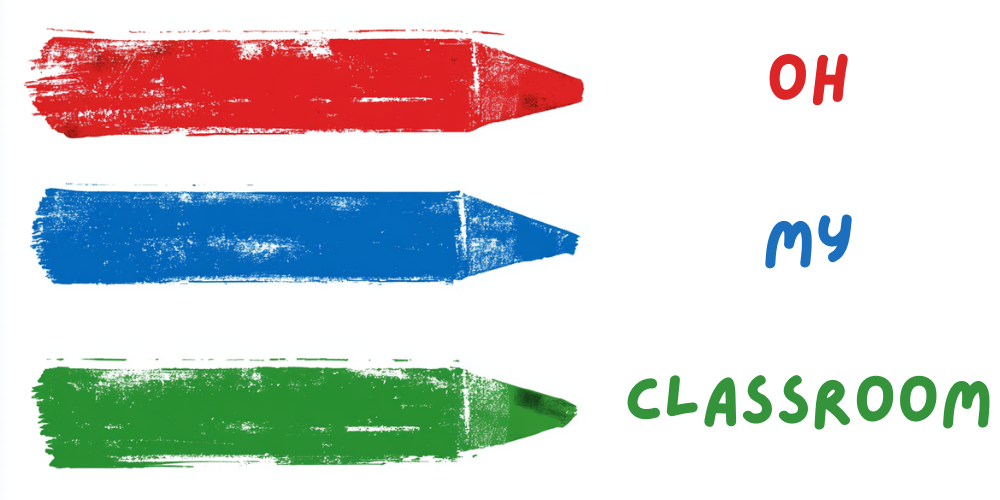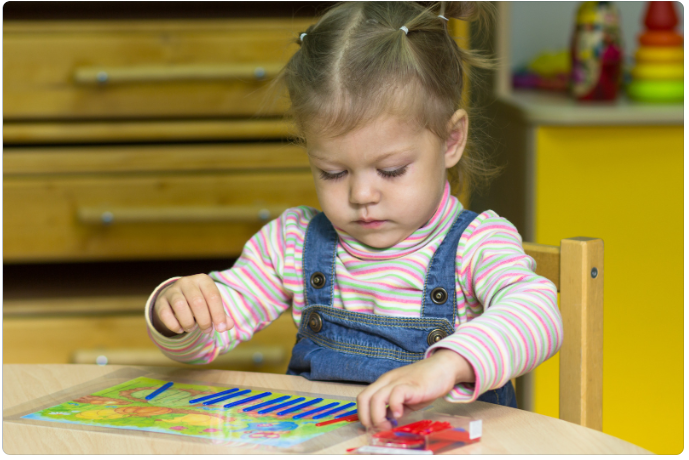Counting sticks, also known as Cuisenaire rods, are versatile educational tools used to introduce mathematical concepts in a fun and engaging way.
These colorful sticks come in different lengths, each representing a specific numerical value.
From basic counting and arithmetic to more complex concepts like fractions and patterns, counting stick activities offer a hands-on approach to learning that appeals to learners of all ages.
Now, we will explore fun & easy counting stick activities that promote mathematical understanding and critical thinking skills, making math a joyful experience for students and educators alike.
So, let’s dive into the world of counting sticks and discover the endless possibilities they bring to the world of mathematics!
Number Tower Challenge:
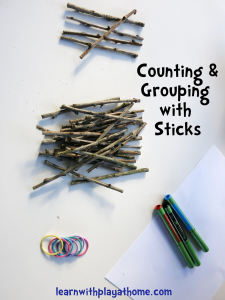
In this activity, students will use counting sticks to construct a number tower by arranging them in ascending order. Each student receives a set of counting sticks and starts building their tower from the ground up. They must place the sticks in sequential order, ensuring that each stick represents the next number in the sequence. For instance, they would start with the shortest stick to represent ‘1’ and continue adding longer sticks to form a staircase-like tower. This exercise not only reinforces number sequencing but also enhances fine motor skills and visual-spatial awareness as students create their towers. For an added challenge, educators can introduce missing numbers, prompting students to identify the correct stick needed to complete the sequence.
Addition and Subtraction Puzzles:
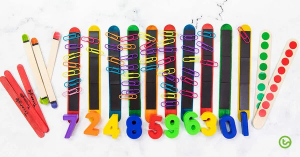
To strengthen students’ grasp of basic arithmetic operations, teachers can prepare addition and subtraction puzzles using counting sticks. Each puzzle consists of a series of sticks with different lengths representing specific numbers. Students must add or subtract the sticks together to solve the equation and find the result. For example, they might be presented with a set of sticks representing ‘4’, ‘+’, and ‘2’. By combining the sticks appropriately, they’ll discover that 4 + 2 equals ‘6’. This interactive activity not only reinforces mathematical skills but also encourages critical thinking and problem-solving.
Related: 20 Exciting Stem Bins Ideas for Kids
Fraction Fun:
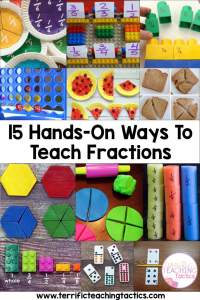
Introducing fractions to young learners can be challenging, but counting sticks make it more manageable and enjoyable. Educators can demonstrate how to represent fractions using these colorful tools. For instance, they might ask students to find a stick that is half the length of another stick, emphasizing the concept of one-half. Additionally, they can explore other fractions by combining sticks and observing how different lengths relate to each other. This hands-on approach to fractions will help students internalize the concepts better and lay a solid foundation for more advanced mathematical topics.
Pattern Play:
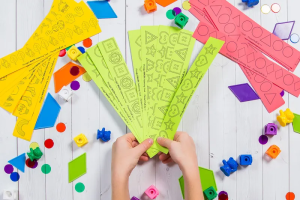
Pattern recognition is a fundamental skill in mathematics, and counting sticks offer an excellent way to teach this concept. Teachers can prepare pattern cards with missing elements, and students must use counting sticks to complete the patterns. Patterns can involve colors, lengths, or numerical sequences, fostering creativity and critical thinking as students identify and extend the patterns. This activity also allows for differentiation, enabling educators to create patterns of varying complexity to suit different skill levels.
Related: 20 Exciting Games Like Musical Chairs
Greater Than and Less Than Challenges:
Understanding the concepts of ‘greater than’ and ‘less than’ is essential for developing number sense. With counting sticks, educators can devise interactive challenges for students to compare numbers visually. They can provide sets of sticks with different lengths and ask students to form pairs of numbers to compare. For instance, students may have to find sticks representing ‘5’ and ‘7’ and then use the appropriate comparison symbol to indicate which number is greater. This activity not only strengthens number sense but also fosters logical reasoning and mathematical communication.
Source: jillianstarrteaching.com
Measurement Mania:
In this activity, students will embark on a measurement adventure using counting sticks as their measuring units. Teachers can set up various objects of different lengths around the classroom or outdoors. Students must explore the environment, selecting appropriate counting sticks to measure the length of each object. They can record their findings in a measurement journal, comparing the lengths and discussing their observations. This hands-on approach to measurement not only reinforces mathematical concepts but also promotes scientific inquiry and data collection skills.
Source: proudtobeprimary.com
Shape Perimeters:
Teaching students about the perimeter of shapes becomes more engaging with counting sticks. Teachers can draw different shapes on the board or provide shape templates. Students must then use counting sticks to measure the sides of each shape and find the total perimeter. This activity allows them to visualize the concept of perimeter and understand how it changes with varying shapes and side lengths. As an extension, educators can introduce irregular shapes, challenging students to determine the perimeter using the sticks creatively.
Source: kindergartenworks.com
Skip Counting Sequences: Skip counting is a vital skill for multiplication and division, and counting sticks can aid in developing this skill. Educators can prepare sets of counting sticks representing specific numbers and ask students to identify the pattern in the sequence. For example, students might be given sticks for numbers 2, 4, 6, 8, and 10, and they must recognize the pattern of counting by twos. This activity not only reinforces skip counting but also prepares students for understanding multiplication and division concepts later on.
Tens and Ones Composition:
Understanding place value can be tricky for young learners, but counting sticks can simplify the concept. Teachers can provide bundles of ten counting sticks (representing tens) and individual sticks (representing ones). Students then practice composing two-digit numbers by combining the tens and ones sticks. For example, to represent the number ’27’, they’ll use two tens sticks and seven individual sticks. This interactive activity makes place value tangible and allows students to grasp the concept more effectively.
Source: understood.org
Graphing with Counting Sticks:
Graphing becomes a dynamic activity with the incorporation of counting sticks. Teachers can prepare a graph template with categories on one axis and corresponding counting sticks for data points. Students collect data on various topics, such as favorite colors or animals, and then place the appropriate counting sticks on the graph. They can then interpret the graph, comparing quantities and identifying trends. This activity not only reinforces data analysis but also introduces students to basic graphing techniques.
Source: proudtobeprimary.com
Fraction Equivalence Challenge:
This activity focuses on developing students’ understanding of equivalent fractions. Teachers can provide sets of counting sticks representing various fractions (e.g., 1/2, 1/3, 1/4, etc.). Students must compare and combine sticks to find equivalent fractions. For example, they might discover that two 1/4 sticks are equivalent to one 1/2 stick. This hands-on exploration of fractions allows students to visualize and manipulate the concepts of equivalence, paving the way for more complex fraction operations.
Source: cindyelkins.edublogs.org
Array Artwork:
Incorporate creativity into math lessons by using counting sticks to create array artwork. Students can arrange the sticks in rectangular arrays to form colorful patterns and shapes. For instance, they might create an array of 5×4 sticks to form a vibrant rectangle. This activity reinforces multiplication concepts, as students count the sticks in each row and column to find the total number of sticks in the array. It also encourages artistic expression and makes math lessons more enjoyable.
Source: teachstarter.com
Money Math:
Teaching students about money and currency becomes interactive with counting sticks. Teachers can assign specific values to different counting stick lengths, representing different denominations of money. Students can then use these sticks to “buy” various items in a simulated store, calculating the total cost and making changes. This activity helps students relate mathematical concepts to real-life situations and fosters practical money management skills.
Source: educationtothecore.com
Roman Numeral Exploration:
Counting sticks can be a valuable tool for introducing students to Roman numerals. Teachers can label each stick with a Roman numeral (e.g., I, V, X, L, C) and demonstrate how to construct Roman numeral representations of various numbers. Students can then practice forming Roman numerals using the sticks and even engage in fun games to reinforce their newfound knowledge.
Source: mathsnoproblem.com
Geometric Shapes Construction: Enhance students’ understanding of geometric shapes by using counting sticks to build 2D and 3D shapes. Teachers can provide shape templates or challenge students to construct shapes from verbal descriptions. For example, they might create a triangle using three counting sticks or a cube using six squares and eight connectors. This activity promotes spatial reasoning, geometry concepts, and critical thinking as students visualize and manipulate the sticks to form different shapes.
Probability Play:
Introduce students to the concept of probability using counting sticks. Teachers can assign different colors to the sticks and place them in a bag or container. Each color represents an outcome of an event. For instance, there could be three red sticks, two blue sticks, and one green stick. Students then draw sticks from the container, record the color, and calculate the probability of drawing each color. This activity helps students understand the likelihood of different outcomes and reinforces basic probability concepts.
Source: pinterest.com
Time-telling Tools:
Counting sticks can serve as interactive time-telling tools. Teachers can label each stick with a specific time duration (e.g., 5 minutes, 15 minutes, 30 minutes, 1 hour). Students can use these sticks to practice telling time on both analog and digital clocks. By manipulating the sticks on a clock face, students gain a better understanding of time intervals and how they relate to standard clock measurements.
Source: iknowit.com
Number Bond Building:
Number bonds are an essential part of early math education, and counting sticks can facilitate their exploration. Teachers can demonstrate how to use counting sticks to represent number bonds. For instance, for the number 8, students might use two sticks representing ‘3’ and ‘5’ to show that 3 + 5 = 8. This activity helps students understand the relationship between numbers and reinforces the concept of part-whole relationships.
Source: thirdspacelearning.com
Word Problems Extravaganza:
Engage students in solving word problems using counting sticks. Teachers can present a variety of math word problems related to addition, subtraction, multiplication, and division. Students can then use counting sticks to visualize the problems and find the solutions. This hands-on approach to word problems fosters critical thinking skills, mathematical reasoning, and the ability to apply math in real-life situations.
Source: whatihavelearnedteaching.com
Math Olympics:
End your counting stick activities with a fun and competitive Math Olympics. Organize various math challenges using counting sticks, such as quick addition races, tower-building contests, fraction equivalence competitions, and more. Divide students into teams and award points for correct answers and creative problem-solving. This activity not only celebrates students’ achievements but also reinforces their mathematical skills in a lively and enjoyable way.
Source: julieannedevlin.com
